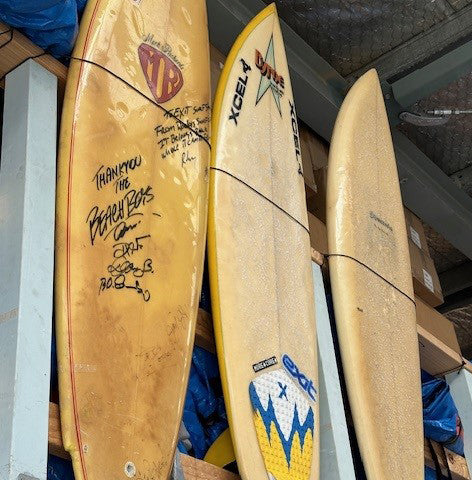
Why do Surfboards turn Yellow?
Surfboards, those sleek and vibrant instruments that glide effortlessly atop ocean waves, are often associated with a certain sun-kissed allure. However, have you ever wondered why some surfboards develop a yellow tint over time? The phenomenon of surfboards turning yellow is more than just a change in appearance; it's a fascinating interplay between science, materials, and the elements.
Understanding the Anatomy of a Surfboard
To comprehend the process behind the yellowing of surfboards, it's crucial to first understand their construction. Typically, modern surfboards are crafted from a variety of materials, most commonly polyurethane or polystyrene foam cores, which are then coated with fiberglass and resin. These materials, while durable and essential for riding the waves, can be susceptible to discoloration over time due to prolonged exposure to sunlight and other environmental factors.
The Culprit: UV Radiation
The primary culprit behind the yellowing of surfboards is prolonged exposure to ultraviolet (UV) radiation from the sun. UV rays are a form of electromagnetic radiation emitted by the sun that can cause various materials to degrade and undergo chemical changes.
When exposed to UV radiation, the resin used in surfboard construction begins to break down. This breakdown process, known as photodegradation, causes the resin to undergo polymer chain scission. As a result, the molecular structure of the resin changes, leading to a yellowing effect on the surface of the surfboard.
Oxidation and Environmental Factors
Moreover, environmental factors such as heat and humidity can exacerbate the yellowing process. Oxidation, triggered by exposure to oxygen in the air, also contributes to the discoloration. Over time, these combined effects cause the surfboard's once-pristine white or clear resin coat to take on a yellowish hue.
Embracing the Patina: Beauty in Aging
Despite the initial concern over a surfboard's yellowing, many surfers come to appreciate and even embrace this transformation. The yellowing signifies the board's history, showcasing the countless hours spent riding waves and soaking up the sun. It becomes a testament to the board's resilience and the adventures it has accompanied its rider on, forming a unique patina that adds character and charm.
Preserving Your Board's Appearance
While yellowing is a natural process, there are steps surfers can take to minimize its effects and prolong their board's pristine appearance. Storing the board in a cool, shaded area when not in use and using board covers or bags during transportation can help mitigate the impact of UV radiation.
Conclusion: A Testament to Adventure
In conclusion, the yellowing of surfboards is a testament to the interaction between materials, sunlight, and the elements. What might initially seem like a flaw or degradation is, in fact, a natural part of a surfboard's lifecycle. Rather than blemishes, the yellowed areas on a surfboard tell stories of countless swells, shared moments, and thrilling rides, embodying the essence of the surfing lifestyle.
Next time you spot a yellowed surfboard, take a moment to appreciate the beauty in its transformation, knowing that beneath the surface lies a history as vibrant as the waves it once conquered.

